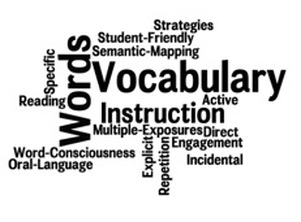Myfakewall.com is a free site where students can create a mock Facebook wall. It's a great way to engage reluctant writers because it allows them to creatively demonstrate their knowledge with a limited amount of text. Students can create a wall to feature biographical information and show insight into the roles, relationships and contributions of fictitious characters, pets, historical figures, politicians, artists, musicians, characters from a novel, etc.
Many thanks to Westside Storefront teacher (SD23), Jeremy Sanbrook, and his students for sharing how their “book club” used myfakewall.com with the best selling novel, Hunger Games.
In an attempt to make high-risk youth enjoy the process of reading and storytelling, our class participated in "book club" twice per week. During book club, our class would sit on the comfy couches next door to our classroom, shut the blinds, and let our minds unwind and relax in literature. Although book club's participation was mandatory, the students were not required to read aloud or answer comprehension questions after each chapter (my main purposes were to have the students enjoy reading and to have them experience completing a book from cover to cover). After each book club session, I would formatively assess the students' comprehension through class discussions. After we finished reading the book, the students were required to create a fake Facebook wall for the character of their choice, along with some other "Who Are They?" character comprehension worksheets.
Technology is growing at an exponential rate and an overwhelming number of tools are available to support students who struggle with reading and writing tasks. Here are a just a few inexpensive or free options that can help school students achieve greater success and better prepare them for college or university.
 By the time struggling readers reach high school, many have shut down or given up completely. For years, reading classroom material has been difficult, if not impossible, and they’ve rarely if ever experienced the pure joy of getting lost in a captivating story, or the excitement of learning something amazing from a non-fiction passage. Instead, they’ve spent most of their school days sitting in desks filled with textbooks they cannot read.
When students don’t read, over time we begin to see a decline in both their language and comprehension. They suffer from not having experience with the vocabulary, concepts and ideas expressed in text. Their spelling and writing skills are impacted and their overall achievement is often limited.
Fortunately, technology is revolutionizing the lives of struggling readers and opening the doors to a literary world far beyond their reading abilities. A variety of digital options exist, but audiobooks provide a simple, effective way to motivate and re-engage struggling readers of all ages.
 Are you looking for ways to support and engage your students? Here's an example of how we recently integrated some simple, but effective digital tools to engage, educate and empower our students.
A Bit of Background . . .
This fall we provided literacy support to sixteen high school boys with severe learning disabilities. We reviewed their files, met with staff and and completed the required standardized testing to gain a basic understanding of their literacy skills and needs. They were bright and creative, but despite working with skilled and caring teachers, most had experienced a great deal of academic failure. Many struggled with basic everyday reading tasks and their spelling scores explained their reluctance to write - only two scored above the 17th percentile on a standardized spelling test.
Our goal was not only to address deficits in critical literacy skills; but also to provide tools and strategies that remove obstacles to learning and empower students with alternate ways to access information and communicate ideas. To personalize their learning and achieve greater success, we wanted to learn more about their background, previous experiences, values, attitudes, talents, interests, strengths and needs. Rather than quizzing, testing, interviewing or assigning an 'All About Me' essay, we chose a multimedia format and integrated some of our favorite digital tools - Animoto, YouTube, BrainPop and Wordle.
 We know that a richer vocabulary significantly impacts our students’ success in reading comprehension, writing, speaking and learning in the content areas, yet it often receives relatively little attention in many classrooms (Beimiller 2001).
The discrepancy that exists in students’ oral language even before they begin school is a concern. Hart and Risley (1995) found that three-year olds from advantaged homes had oral vocabularies as much as five times larger than children from disadvantages homes. Louisa Moats (2001) estimated that linguistically advantaged students enter grade one with about 20,000 words, while disadvantaged students were likely to have only 5,000 – a condition she called “word poverty”. Without intervention, this gap continues to widen. Andrew Beimller (2005) suggested however, that because vocabulary deficits are often culturally based, the likelihood of remediation is higher than with other learning problems.
Read Naturally has come under some criticism lately for a couple of reasons. Some people confuse speed reading and fluency. Fluency is NOT about reading as quickly as you can. Rather, fluency involves reading accurately, at an appropriate pace and with suitable expression. Research has clearly documented the correlation between fluency and comprehension. A study by Duke, Pressley, and Hilden (2004) estimated that 75-90% of students with comprehension problems also lacked fluency.
Programs are just tools that help teachers do their job more efficiently and effectively. At our literacy centre, we used a variety of strategies and resources to personalize learning and respond to each student's unique needs. Some of the resources we've used and shared with others include, but are not limited to: Lindamood-Bell, Phonographix, Discover Reading, Read Naturally, REWARDS, Phonics for Reading, Read Well, Spellography, Ticket to Read, Reading A-Z, Raz-Kids, Earobics and Wordmaker. Read Naturally is just one tool - it is not a total reading program. Rather, it is a supplemental intervention program specifically targeting students who struggle with fluency. Not all students need the Read Naturally strategy. For those that do, it is a very effective intervention when properly implemented.
|



 RSS Feed
RSS Feed